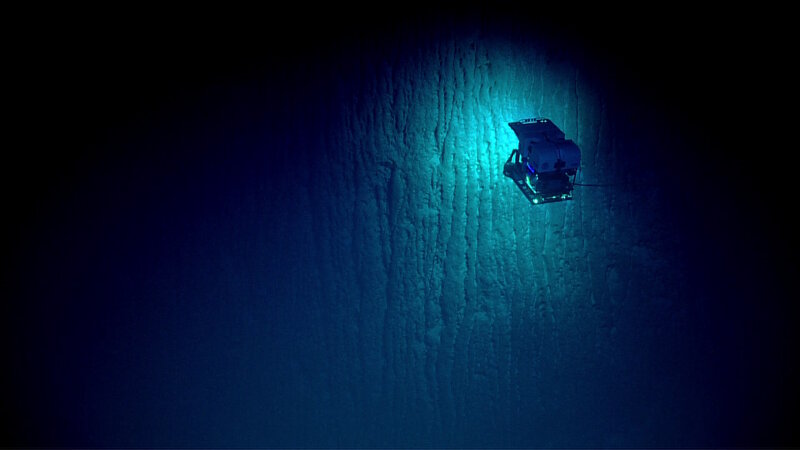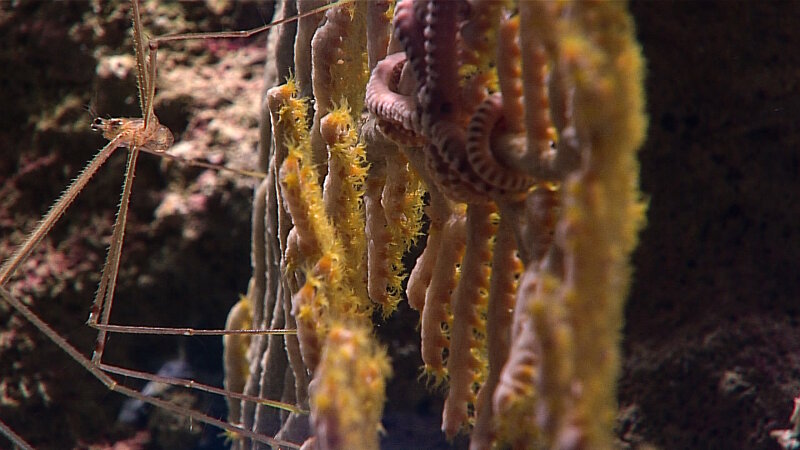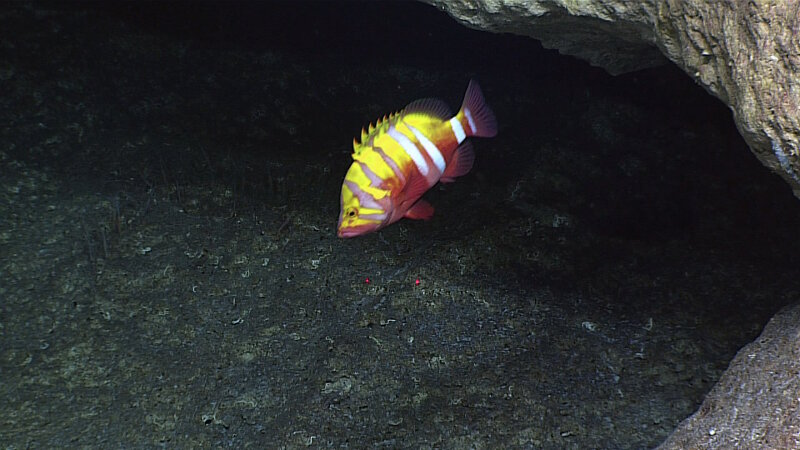-

ROV Deep Discoverer observes a cliff that marks the edge of a coral platform in American Samoa. Fine sediments derived from the coral platform above accented the grooved channels down the steep slope face. Image courtesy of the NOAA Office of Ocean Exploration and Research, Mountains in the Deep: Exploring the Central Pacific Basin. Download larger version (jpg, 402 KB).
-

A chirostylid crab, a type of squat lobster, was seen crawling on a gorgonian seafan (possibly Paracis sp.). In the upper right you can see the coiled arms of an ophiuroid (brittle star) wrapped around the seafan branches. Deep-sea corals provide habitat for many other animals. Image courtesy of the NOAA Office of Ocean Exploration and Research, Mountains in the Deep: Exploring the Central Pacific Basin. Download larger version (jpg, 1.1 MB).
-

This colorful Cephalopholis grouper (also called a garish hind, goldbar grouper, garish rockcod, or Japanese cod - although it is not related to cods) was seen towards the end of Dive 01 of Mountains in the Deep at the Aunuʻu Unit of National Marine Sanctuary of American Samoa. The red dots are lasers, 10 centimeters (3.9 inches) apart, that give scale to our images. The species grows to about 43 centimeters (17 inches) total length. It is marketed fresh and eaten when caught by hook and line when fishing for other bottomfish, but it is too uncommon to be targeted by commercial fisheries. The species is known from southern Japan through Taiwan and the Philippines eastward to Guam, American Samoa, and Tahiti in the Society Islands. Like other groupers, it is a predator that feeds on small fish and crustaceans. Image courtesy of the NOAA Office of Ocean Exploration and Research, Mountains in the Deep: Exploring the Central Pacific Basin. Download larger version (jpg, 1.1 MB).